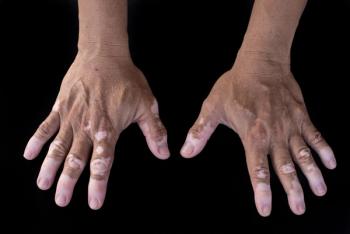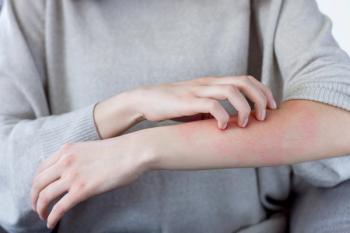
Can Cognitive Behavioral Therapy Change Quality of Life for AD Patients?
Cognitive behavioral therapy with exposure treatment might help but few people with AD receive any form of behavioral intervention, say Dorian Kern and colleagues from Karolinska Institutet, Stockholm.
People with atopic dermatitis often avoid situations that they fear will trigger symptoms. Cognitive behavioral therapy with exposure treatment might help but few people with AD receive any form of behavioral intervention, say Dorian Kern and colleagues from Karolinska Institutet, Stockholm.
The researchers had previously demonstrated that a self-management version of a digital intervention based on CBT could reduce atopic dermatitis symptoms. In a randomized controlled trial of 102 adults with AD, they tested exposure-based treatment delivered as a web-based intervention. The findings indicated moderate to large effects on eczematous symptoms and secondary measures. However, the intervention included guidance by a psychologist—and the researchers say those are not always found in dermatological care.
So they developed a new self-management intervention, adapting it to a format that didn’t require therapist guidance. In that second study, they aimed to examine treatment feasibility and preliminary effects on quality of life, itching sensations, depressive symptoms, and perceived stress. In the second study, 21 adults with AD were assessed by telephone. They then used the digital intervention for 8 weeks. They were also assessed directly afterward and 3 months after the end of the intervention. There was no therapist guidance.
The intervention, administered on a secure website designed to resemble a mobile app, included tools for mindfulness training and exposure. A central mindfulness exercise, for instance, included neutrally observing bodily sensations, such as itchiness, in a highly focused state, without attempting to judge or change any experiences. The individualized exposure exercises focused on counteracting unhelpful avoidance behaviors with more flexible behavior, such as going to a party despite having facial eczema. The participants could also gain inspiration from fictive patient examples throughout the intervention.
Postintervention, the outcomes showed significant improvements, with small to moderate effect sizes. One exception was itching sensations, which failed to show significance. At 3-month follow-up, however, all outcomes—AD-related quality of life, itching, depressive symptoms, and perceived stress—were significant, with moderate to large effect sizes. Out of 18 participants, 4 reported slight improvement, 7 reported moderate improvement, 1 person reported great improvement, and 6 reported no improvement.
Overall, the researchers say, their results indicate that it is feasible to test their method on a larger scale, comparing the self-management intervention directly against the therapist-guided intervention.
Newsletter
Get the latest industry news, event updates, and more from Managed healthcare Executive.




















































